
SCHOOL INSIGHTS SURVEY 2025-26
Your inside look at what’s driving change in schools this year
Explore the trends, challenges and behaviours influencing how schools work, plan and make decisions, and what it all means for education suppliers.

In our annual School Insights Survey…
we asked teachers and senior leaders all the important questions for your education marketing. This report offers a detailed overview of the responses collected, sharing invaluable insights from hundreds of education staff in schools across the UK.
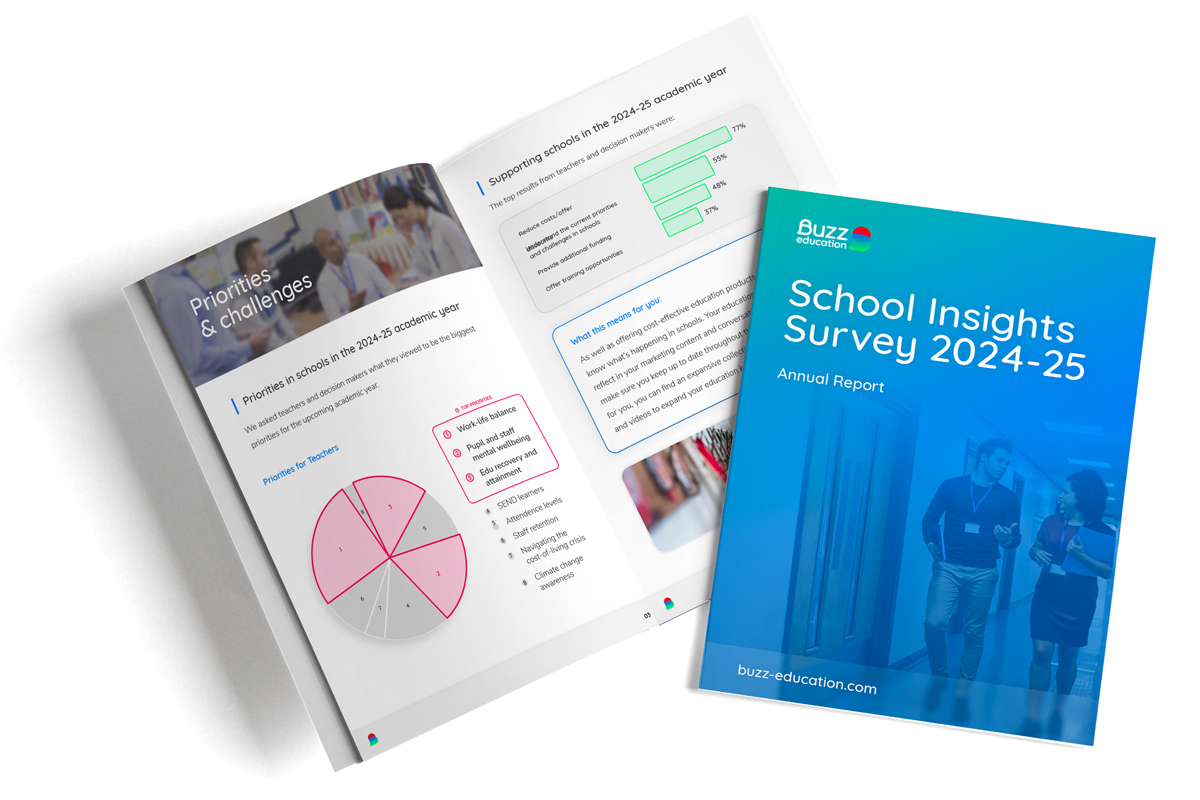
It also compares against key findings from 2024-25, revealing how priorities, challenges and behaviours are shifting in the education sector this year.
Find out what education staff are saying
1. What are the top school priorities?
In 2025, SEND and Wellbeing have taken centre stage this year, with Work-life balance remaining a consistent priority for teachers:
62% of teachers said Work-life balance is their top priority.
61% of senior leaders placed wellbeing first.
Inclusion and wellbeing have overtaken attainment (a top priority in 2024). Schools are focusing on creating supportive environments for both pupils and staff.

What this means for education suppliers
If your products or services support mental health or workload reduction, make that the heart of your message. Be specific about the impact you deliver, whether it’s time saved, stress reduced or outcomes improved.
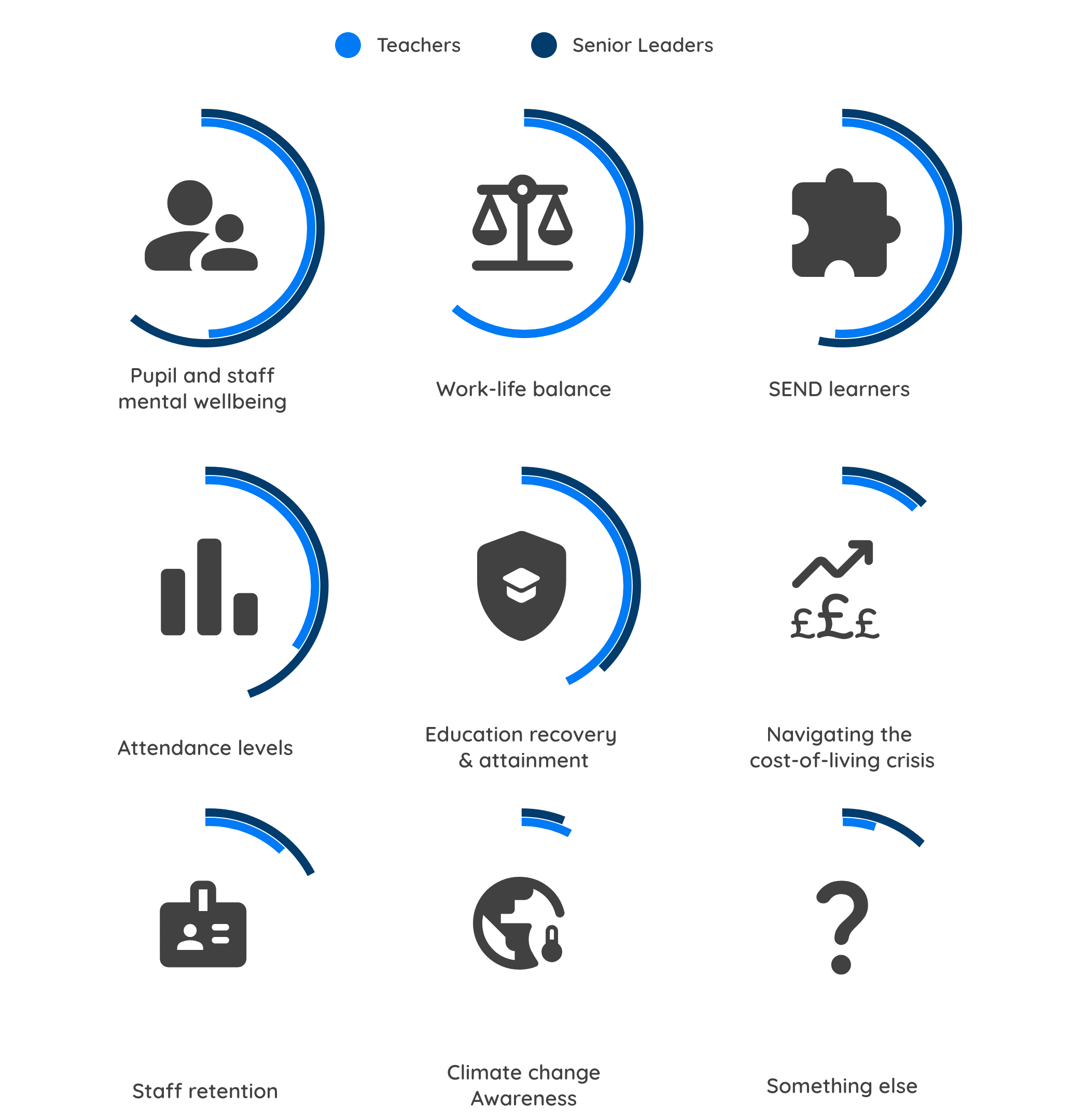
2. What challenges are schools facing most?
Funding cuts (30%) and Staffing (18%) remain the top concerns, closely followed by Rising cost of supplies (16%).
Financial pressure continues to shape decision-making; schools are still juggling limited budgets and high workloads.

What this means for education suppliers
Lead with value in your communications to schools. Show how you save them time, money, or stress and back it up with real examples or measurable results.
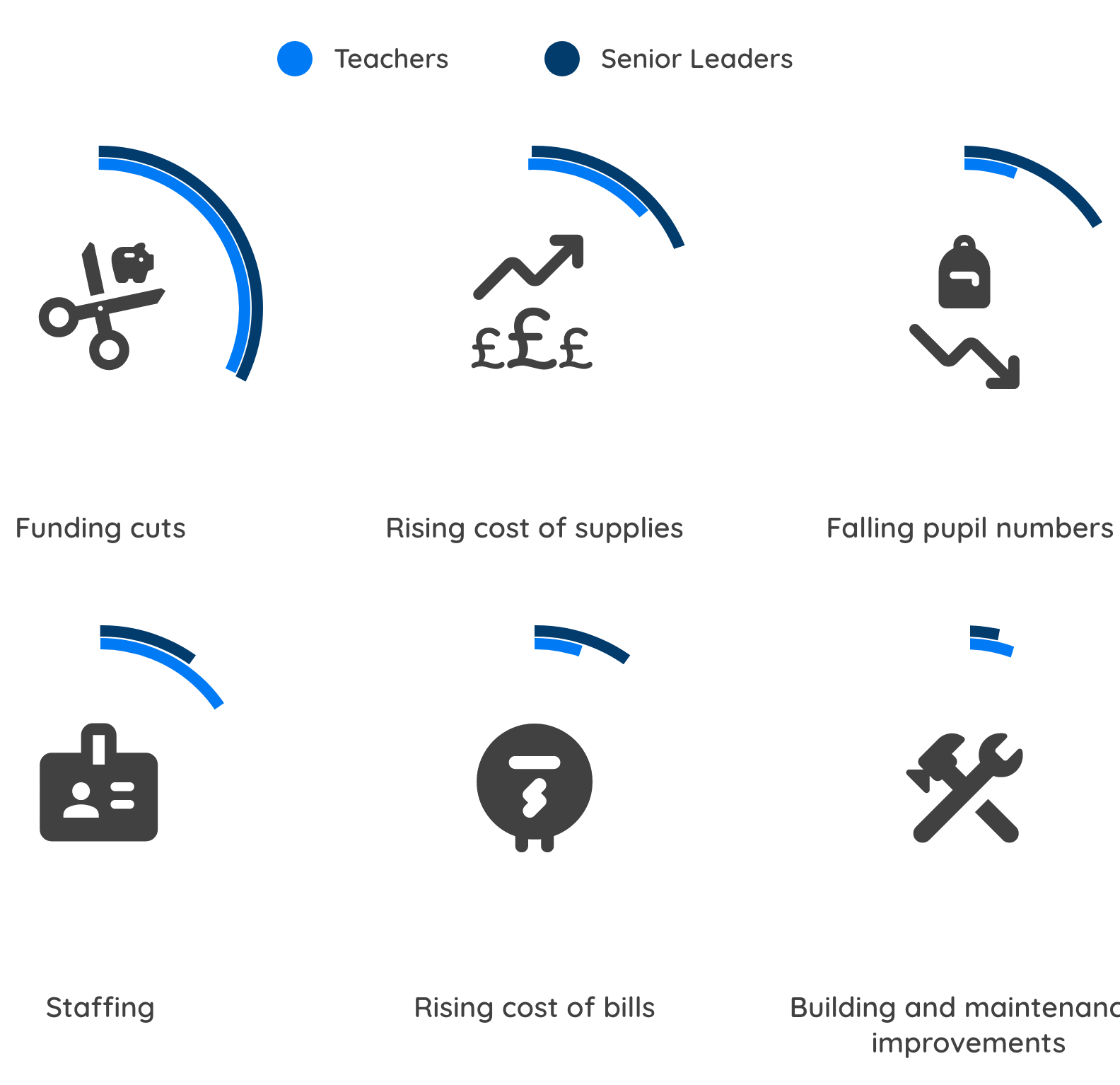
3. Who holds the budget in schools?
Budget responsibility remains steady with last year; 63% of teachers said they have budget authority.
This consistency means both classroom teachers and senior leaders remain key contacts in purchasing decisions.

What this means for education suppliers
Your campaigns should speak to both audiences. Teachers often influence choices even when they’re not the final sign-off so be sure to include them in your mailing list.
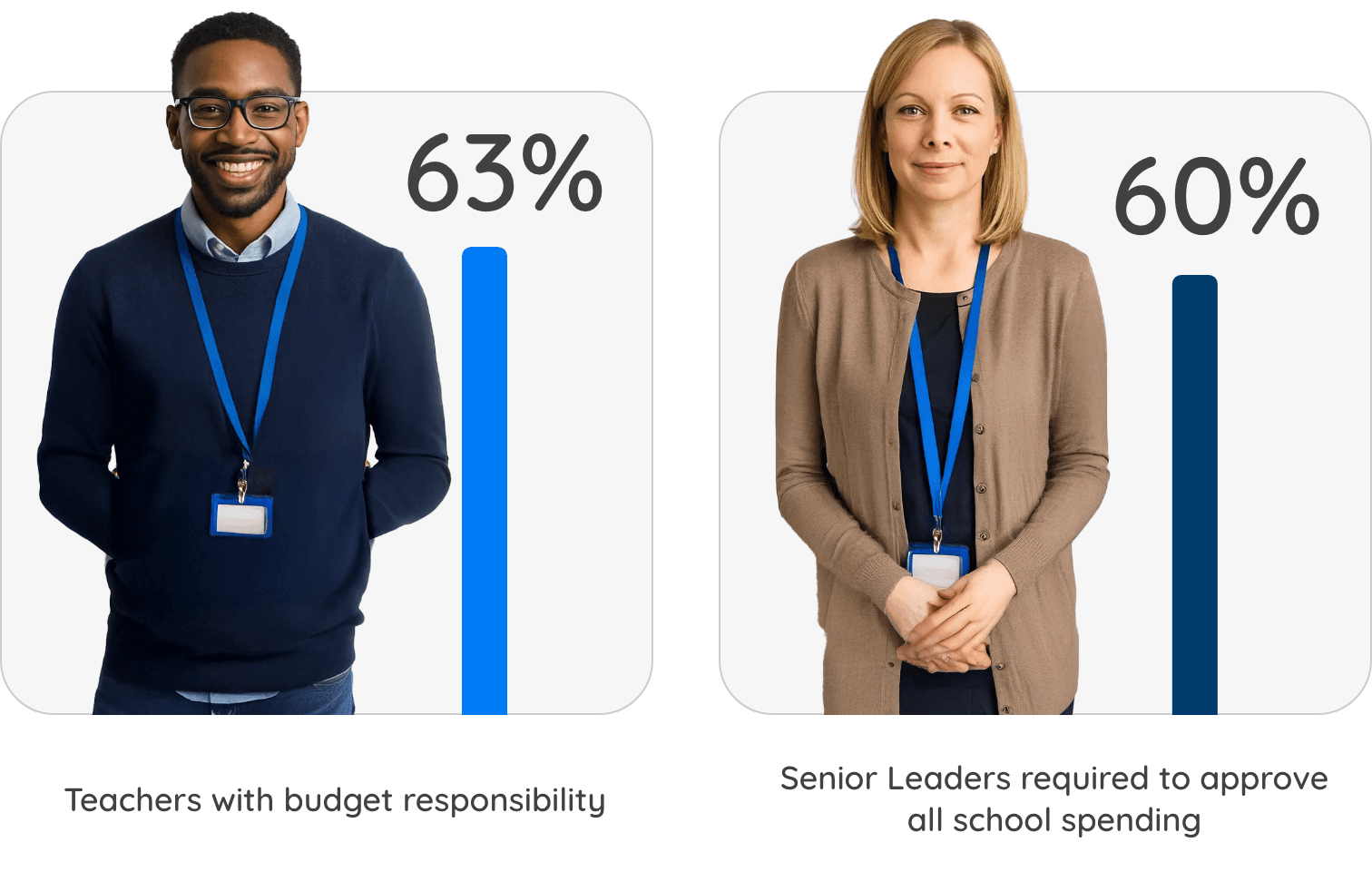
4. When do schools spend their budgets?
Spending patterns haven’t shifted much from last year:
- 47% spend regularly throughout the year.
- 24% spend mainly between September and December.
- 23% focus spending between April and June.

What this means for education suppliers
Maintain a consistent year-round presence in teachers and senior leaders’ inboxes. Plan for higher activity in the autumn and spring terms.

5. What do schools value most when choosing suppliers?
Price remains the top factor (87%), followed by Quality (68%) and Curriculum Fit (53%).
Reviews and case studies are also becoming more influential this year, with 26% of schools now considering them when choosing suppliers.

What this means for education suppliers
Be transparent about pricing, but highlight quality and results too. Social proof such as testimonials or case studies are key for building credibility.
Hear it straight from real UK teachers: “What do you look for when selecting education suppliers?” | The Teacher Interviews Series

6. Why do schools switch suppliers?
Price and Quality are still the biggest reasons schools switch suppliers, but Poor Service is catching up fast.
Nearly one in two schools now say poor communication or service would make them move elsewhere.
- In 2024, 43% cited Poor Service as a reason to switch.
- In 2025, 59% said the same.
Price and Quality are still the biggest reasons schools switch suppliers, but Poor Service is catching up fast.
Nearly one in two schools now say poor communication or service would make them move elsewhere.

What this means for education suppliers
Service is your biggest opportunity. Prioritise communication, responsiveness, and reliability to build lasting loyalty.
Find out what else turns schools off: “What would put you off working with a supplier?” | The Teacher Interviews Series

7. What day are schools most active on email?
Monday remains the strongest engagement day among teachers (58.4%) and senior leaders (75%), then engagement dips midweek before a small rise on Fridays.
This aligns perfectly with our Top Trends research, which found that Monday campaigns deliver around 45% more clicks than midweek sends, while Friday also outperforms the average. On Mondays, teachers and leaders are planning the week ahead and actively looking for opportunities and resources. By Friday, they have more breathing space to explore new ideas.

What this means for education suppliers
Continue sending on Mondays. It’s still the most effective day to reach teachers and decision makers.
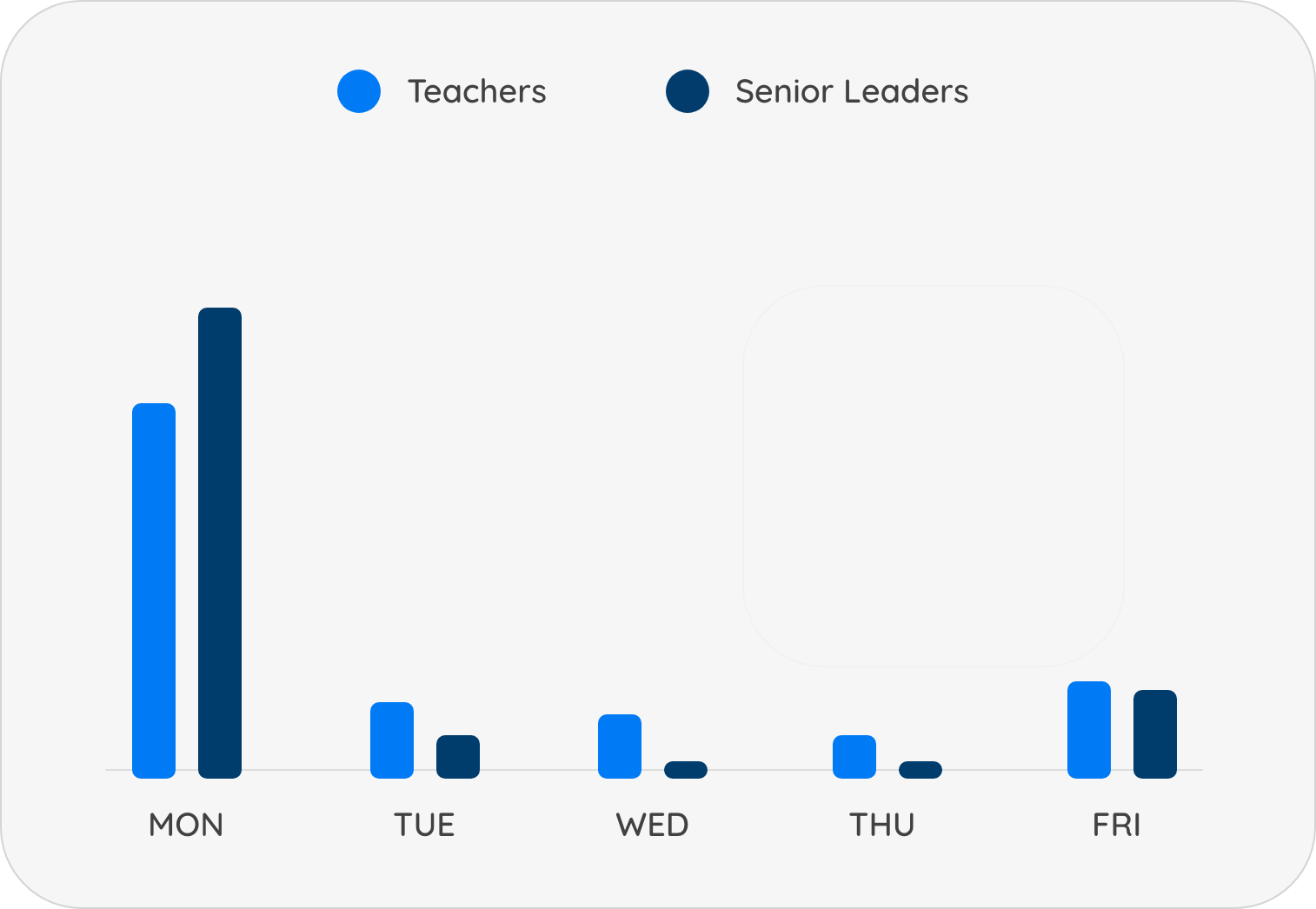
8. What time of day works best for email engagement?
Most schools check emails flexibly throughout the day: 65% of teachers and 51% of senior leaders said they read messages at any time throughout the day.
Even so, timing still plays an important role. Our Top Trends research found that emails sent between 7–9am achieve almost double the engagement of post-lunch campaigns, with a smaller second peak around 3–4pm, once lessons end.

What this means for education suppliers
Schools are active throughout the day, but early mornings and late afternoons are when engagement is strongest. Plan your campaigns around these natural peaks to improve visibility and response rates.
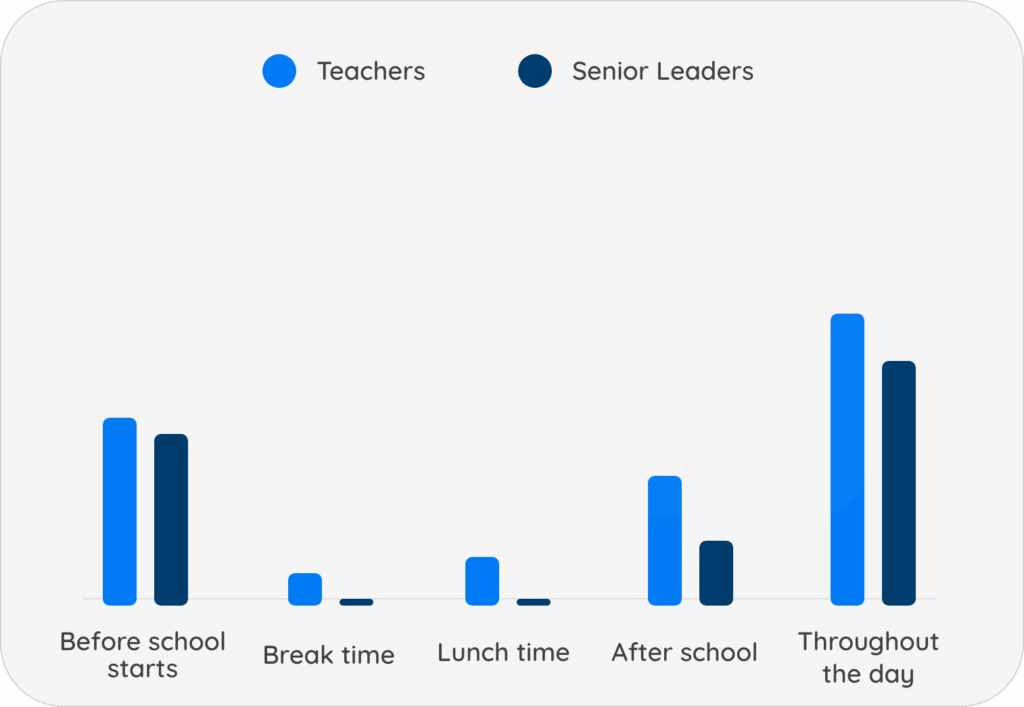
9. Do teachers and leaders check emails during holidays?
Yes, and in large numbers. 73% of teachers and 88% of senior leaders said they check their inbox during holidays.

What this means for education suppliers
Holiday campaigns still perform well. Keep your communications going, schools are listening even when the term ends!
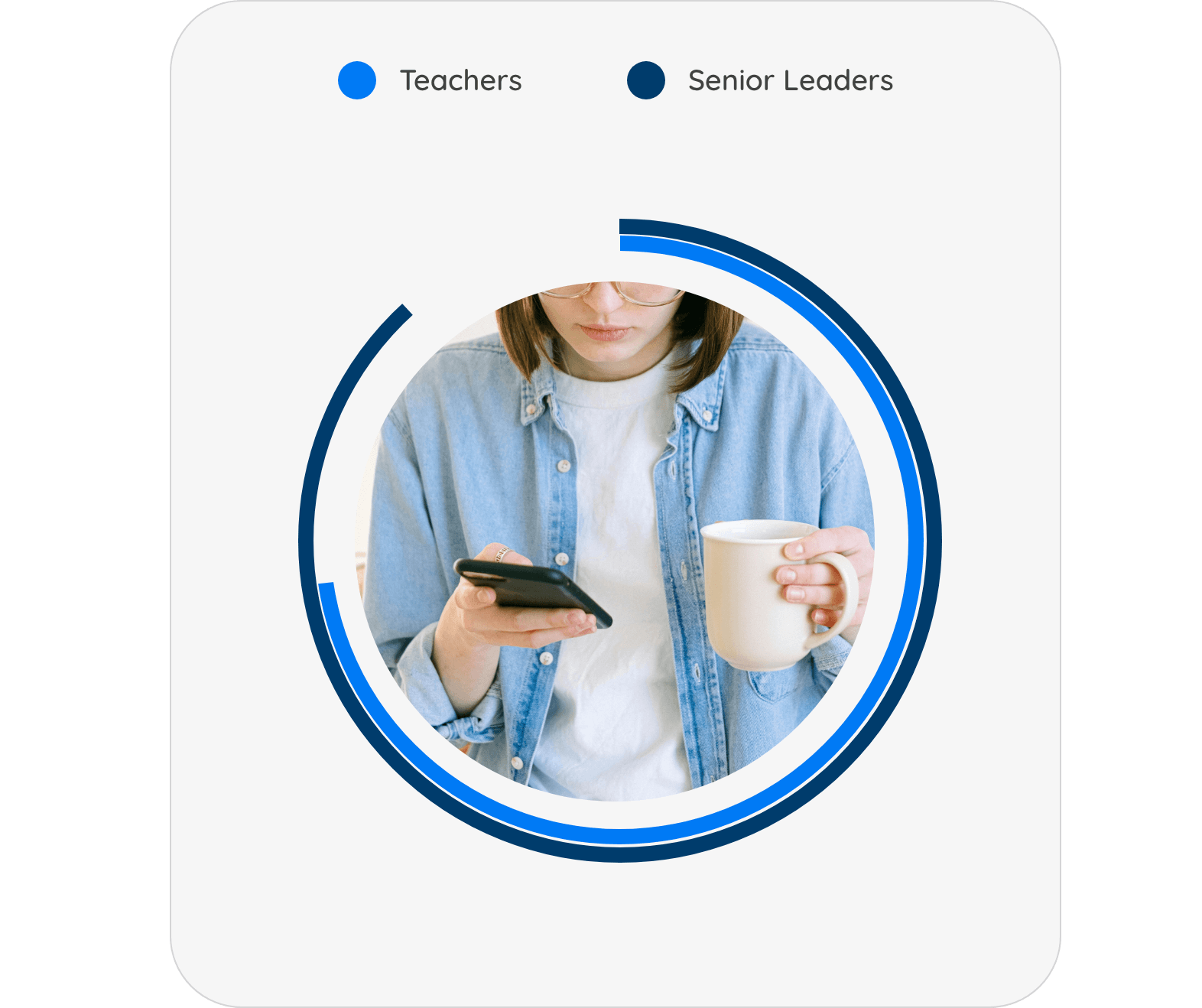
10. What devices are schools using to read emails?
Laptop use has surged: around 80% of teachers and senior leaders are using laptops, up from 2024.
Smartphone use remains high (64% teachers, 76% senior leaders).

What this means for education suppliers
Design for both mobile and desktop. More laptop viewing opens opportunities for visual and more detailed content.
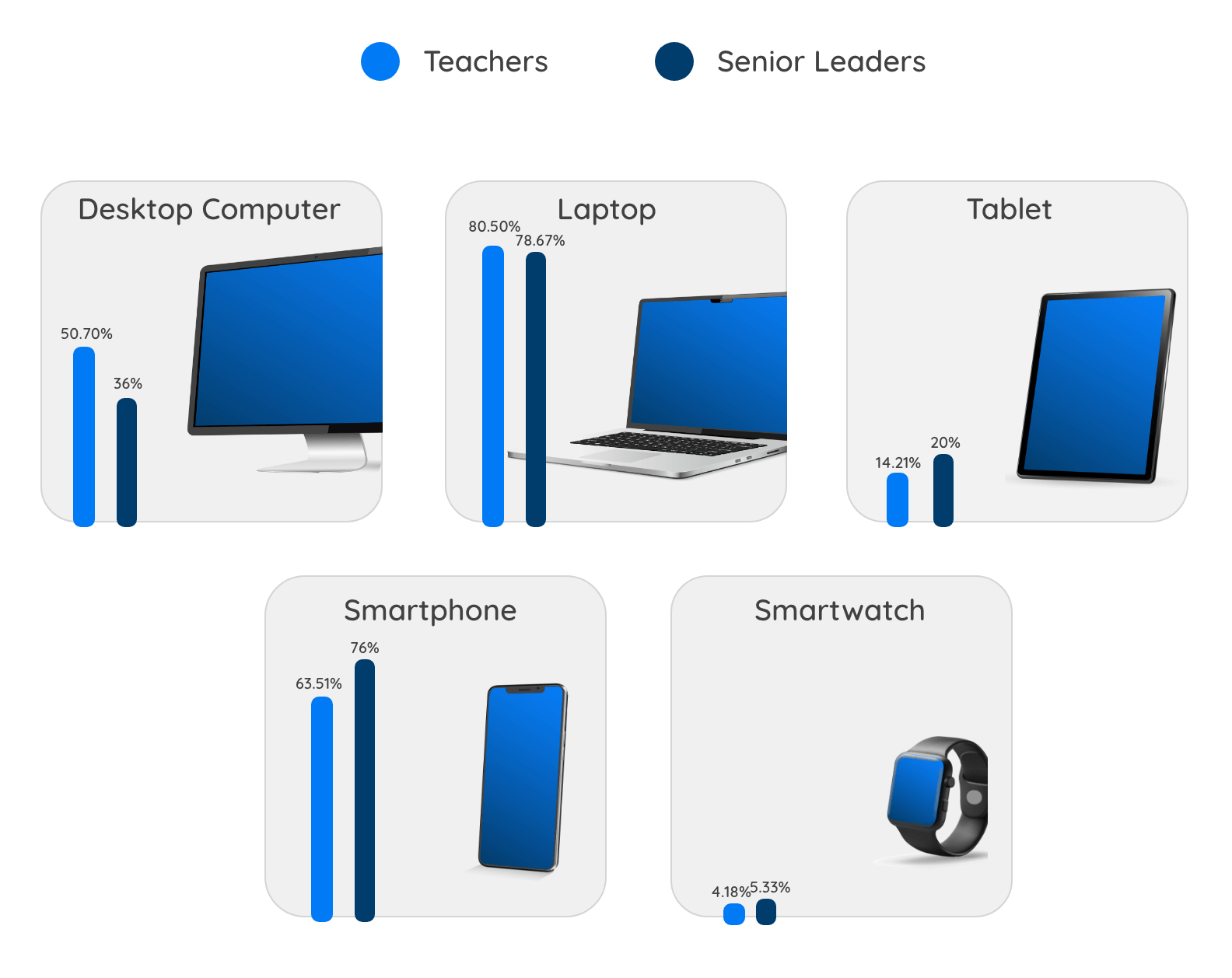
11. What makes schools engage with emails?
The top open trigger is a clear subject line (60% of teachers and 42% of senior leaders), and the majority of staff are more likely to engage with designed emails.

What this means for education suppliers
Invest in professional design and copy. Schools respond best to emails that look polished, feel trustworthy, and get straight to the point.
Clear subject lines and recognisable senders drive the highest engagement, while visual design helps hold attention once opened.
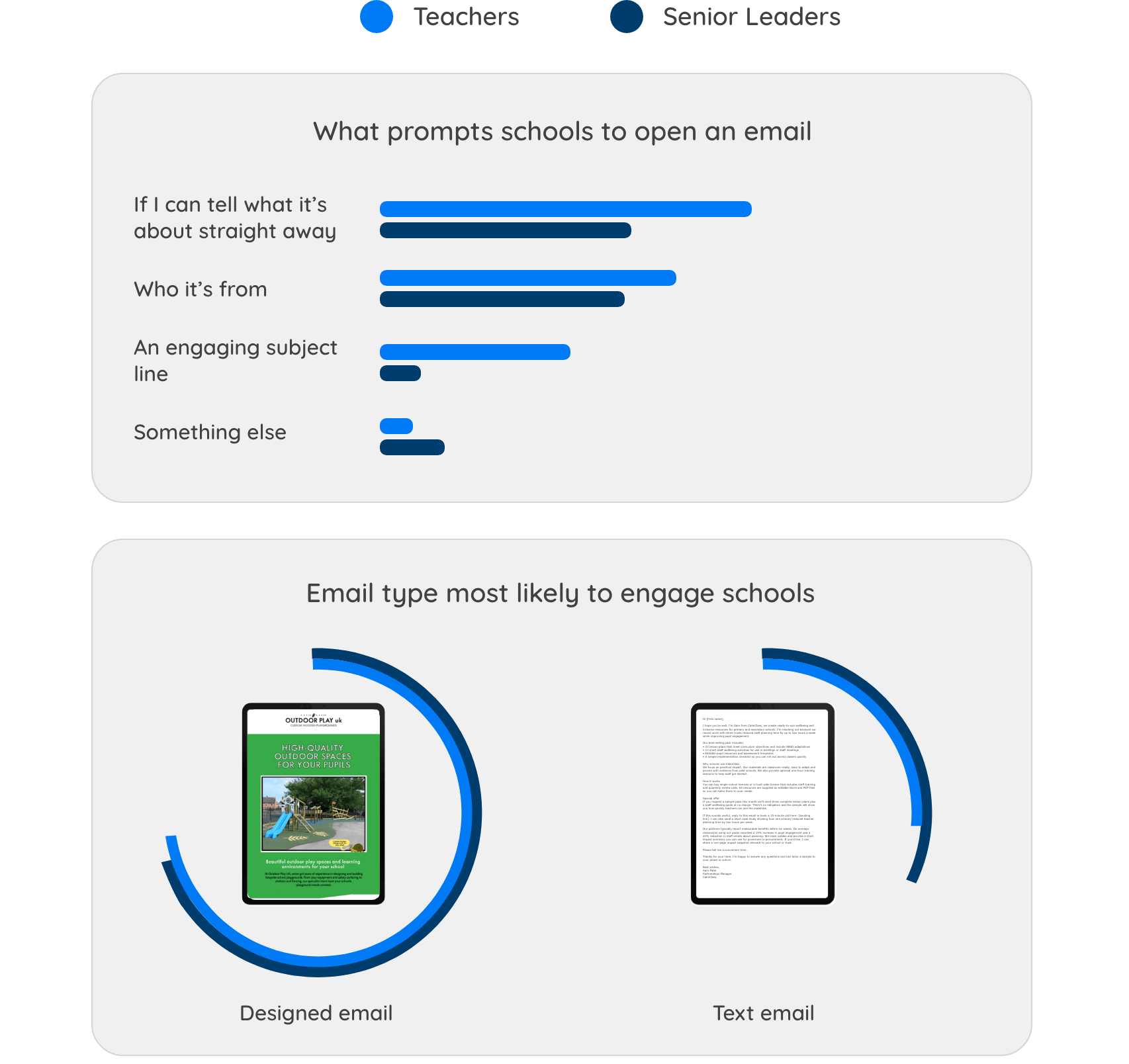
Key takeaways for education suppliers
Wellbeing, inclusion and value continue to shape how teachers and senior leaders make decisions and they’re looking for partners who understand that balance. To connect meaningfully with schools this year:
- Show how your product or service supports pupil inclusion, staff wellbeing or workload reduction.
- Be transparent about pricing and demonstrate measurable impact; time saved, outcomes improved, or costs reduced.
- Prioritise service. Poor communication is now one of the top reasons schools switch suppliers. Fast, reliable, human service builds long-term trust.
- Stay visible year-round. Schools spend regularly across the academic year, with smaller peaks in spring and autumn so keep your presence consistent.
- Design clear, professional and well-branded emails and resources. Teachers open messages that look credible and get straight to the point.
The suppliers who thrive in 2025 will be those who listen, adapt and prove their impact; building relationships grounded in clarity, empathy and genuine support for schools.






